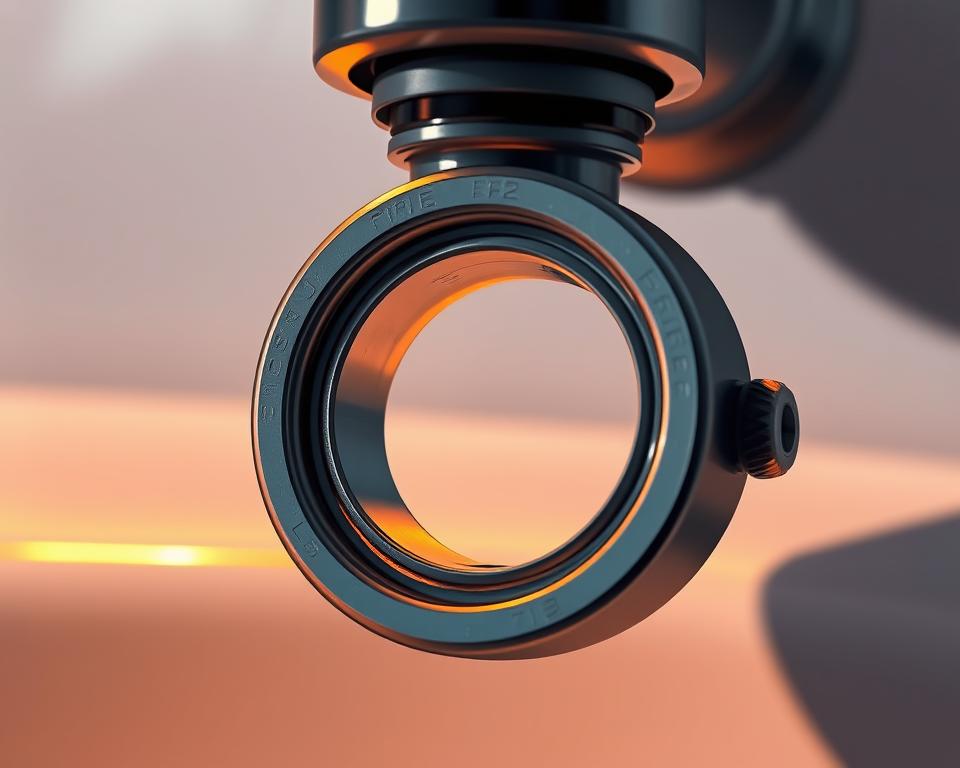DIY Guide: Faucet Valve Seat Replacement Tips
Believe it or not, a leaky fixture can pour out over 3,000 gallons of water each year! That’s enough to fill a small swimming pool! Fixing worn-out components saves money and conserves water—no plumbing experience needed.
Our step-by-step guide keeps it straightforward. Grab supplies from Installation Parts Supply and end leaks in no time. Avoid expensive service calls and live leak-free with faucet valve seat.
Follow our step-by-step instructions for a smooth fix. Top-grade parts deliver durability and boost your DIY confidence.
Key Takeaways
- Drips spike water costs—simple repairs save both water and money.
- Tackling it yourself cuts out plumber fees.
- Durable components from reliable sources last longer.
- User-friendly steps plus simple tools make it easy.
- Regular maintenance extends the life of your fixtures.

Why Faucet Valve Seat Replacement Is Essential
A tiny leak feels minor—until it causes major issues. Deteriorated parts drain water, raise costs, and threaten your home. Early repairs cut costs and maintain smooth operation.
Detecting a Worn Valve Seat
Watch for these red flags:
- Persistent drips even with the faucet off.
- Variable water pressure and uneven spurts.
- Corrosion spots or pitting on metal.
Kitchen drips hinder cooking and leave unsightly marks. Quick fixes avoid larger repair bills.
How Damage Leads to Leaks
Scale buildup plus friction break down components. Tiny gaps form and water starts seeping out. Left unchecked, valve seat corrosion can ruin the entire fixture.
Rely on Installation Parts Supply for quality replacements. Installation Parts Supply parts combat deposits and hold tight.
Quick leaking faucet repair protects your home and conserves water—up to 3,000 gallons yearly!
Tools and Parts You’ll Need for the Job
The right kit makes for a durable, leak-proof repair. From minor drips to stubborn leaks, proper gear speeds the job. Gather these items first:
Must-Have Tools for Valve Seat Replacement
Your minimal toolset:
- Adjustable wrench for nuts and fittings.
- Seat extractor wrench—to pull old seats.
- Phillips and flat-head screwdrivers for disassembly.
- Pliers: Grips small components securely.
For corroded housings, a seat grinding tool restores smooth surfaces. A comprehensive faucet repair kit has all you need.
Parts Sources
Avoid cheap parts that fail fast. Installation Parts Supply offers durable, compatible components nationwide. Their repair kits bundle all necessary parts plus guidance.
| Must-Haves | Extras |
|---|---|
| Adjustable wrench | Valve-seat grinder |
| Valve-seat remover | Heat source |
| Repair kit | Pipe cutter |
Good tools and parts save repeated trips. You’ll avoid repeat repairs and enjoy a drip-free home for years.
Valve Seat Replacement Steps
A straightforward DIY fix that halts water loss. Whether you’re a beginner or a seasoned DIYer, these steps ensure a smooth process. Ready your tools and dive in.
Step 1: Shut Off Water and Disassemble the Fixture
Shut off water by turning the supply valves clockwise. Turn the faucet on to drain any water left. Unscrew the handle and then the retaining nut using your tools.
Pro Tip: Label parts with tape to simplify reassembly. Consider Installation Parts Supply’s rust-resistant nuts for longevity.
Step 2: Take Out Old Seat
Inspect the assembly for corrosion. Fit a seat wrench into the worn component and turn counterclockwise. If stuck, spray penetrating oil and let it soak for 10 minutes.
| Typical Issues | Fixes |
|---|---|
| Seized seat | Use heat (carefully) or a locking plier |
| Stripped threads | Replace the entire housing |
Step 3: Fit New Seat
Wire-brush the hole to clear corrosion. Align the new seat (*replace valve seat* from *Installation Parts Supply*) and hand-tighten first. Use your wrench to snug it up—don’t over-torque.
Step 4: Reassembly & Leak Test
Reassemble parts in the opposite sequence. Open the shutoff valves gradually. Inspect for drips and gently tighten as required. Nailing this DIY faucet repair keeps your bills low!
In Closing
Your home deserves hassle-free plumbing that stands the test of time. Addressing issues promptly conserves water and money.
Armed with these instructions, you’ll repair like a pro. Count on Installation Parts Supply for parts that withstand wear.
Add these faucet maintenance tips to your routine: inspect washers annually and tighten loose handles promptly. A bit of upkeep today prevents major overhauls tomorrow.
Time to get started—collect your tools and banish drips for good.
